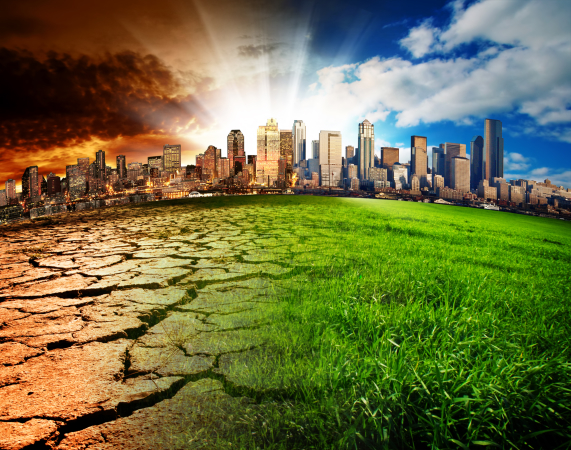
Extreme heat, natural disasters, and biodiversity loss have become common occurrences due to climate change. As these phenomena occur more frequently, homes and businesses are being destroyed in the process while food systems are being put at risk. An example of this would be Hurricane Harvey in 2017, which caused $125 billion in economic damage. Another example would be the Australian wildfires which ended in early 2020, causing more than $4.4 billion in damage while killing more than a billion animals.
Due to events such as these, the concerns of insurers are no longer individual events, but now the interactions between the global climate and human systems. But the effects of climate change may prove to be an opportunity for the industry as well.
The effects on property and casualty insurers
Property and casualty are able to use the annual policy cycle and their experienced understanding of evolving risks in order to reprice and rearrange portfolios to avoid exposure to climate events. But evidence has shown that the property and casualty (P&C) insurance industry will have to reshape its business models. The growth of the values at risk, as well as volatility, provides the opportunity for P&C insurers to develop responses to the shifts driven by climate change while simultaneously broadening the relevance of the industry from risk mitigation via risk transfer.
A few insurers have started this process by incorporating climate risk considerations into new products and into their underwriting processes. Other insurers have committed to reducing their carbon footprint by reducing their exposure to carbon-intensive industries by 2030 or 2040. Although the industry has acknowledged that climate change is a large threat, not many insurers have made changes to prepare their businesses for it. This may be dangerous for insurers who underestimate the threat of climate change.
Climate changes’ effects are systemic and it has the power to stress local economies and even cause market failures. This would drastically affect both consumers and insurers. Additionally, if catastrophic events happen more frequently, unprepared insurers may be at risk of having threatened company business models and this would threaten the business’ viability.
Catastrophic events are projected to continue happening into the future. According to McKinsey’s research, the value at risk from climate-induced hazards may increase from about 2% of global GDP to more than 4% of global GDP in 2050. This projection, which includes more frequent floods and wildfires, may lead to underinsurance. This will lead to premium loss, higher rates of self-insurance, and increased demand for disaster relief from the public sector.
Revised business models is necessary
The insurance industry has been offered the opportunity to create economic security by offering reliable protection. This can be done by including climate risk into management decisions. This can be done by completing these actions:
- Test the total exposure against projected catastrophic events
The concentration of risk is projected to increase seeing that climate-related losses cover a range of coverage, such as floods, property damage, and business interruption. Current insurance models may not be able to handle the growing number, types, and interconnectivity of risk.
- Resilience building and rebalancing of portfolios
Insurers are able to build resilience by exploring low-probability catastrophic events, diversifying their portfolio, and planning to evolve exposure. It would also be beneficial to make use of risk models that assume nonstationary risk and de-emphasize historical data.
- Innovate to combat climate-related risk
Insurers should offer innovative solutions in order to cover new and more frequent catastrophic events. These solutions can be as simple as parametric pricing, which is insuring policyholders against events of a set magnitude instead of insuring the value of losses. Insurers should also find innovative ways to protect businesses from the effects of these catastrophes, such as heat waves that reduce crop yield, kill livestock, and/or limit outdoor working hours.
The takeaway
The P&C insurance industry is able to prepare itself for climate change while offering additional benefits to their customers, only if they revise and improve their business model in response to climate risk. But this has to be done swiftly.
If insurers do not plan fast enough, the plans made will prove to be ineffective as a response to catastrophic events. Businesses also have the responsibility of being prepared for the risks of climate change, by being adequately insured. If business owners are interested in finding a business insurer, The Really Useful Information Company (TRUiC) is able to offer information on the best small business insurance companies.












